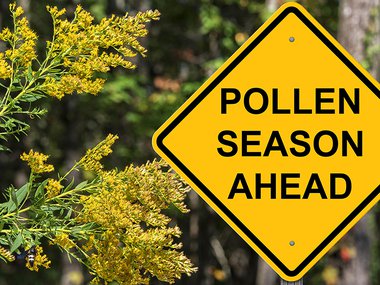Question Your World: How Are Scientists Addressing Peanut Allergies?
Combating allergies is a great example of how science impacts our day-to-day medical needs. Over the years, scientists have made numerous attempts to combat many allergies through pills, injections, unpleasant gooey liquids that you have to drink out of a weird little cup, and more.
A peanut allergy is one of the most discussed because of the extreme risk it poses for some children. A recent study is showing some promise for a potential future solution for many family’s peanut worries. So, how are scientists addressing peanut allergies?
One of the biggest rules of making anything for the general consumer base is to know your user group! Considering that very young children are the ones truly needing a peanut allergy-related medical intervention, these researchers did not go the route of unpleasant-tasting liquids, shots or pills. It's very difficult to get young kids to participate in those forms of medicine!
These scientists looked at a different delivery method altogether, one that’s used for quitting smoking, birth control, vitamin supplements and dealing with motion sickness, just to name a few! A patch makes for a much easier way to administer medicine to very young children, especially if it helps save a life!
These are very early test results and much more studies are needed before this becomes something that families use, but the preliminary results were encouraging. A very small sample size of 360 children were participants in a study where one group received the peanut allergy-combating patch and another group received a placebo. They were carefully monitored and very cautiously exposed to peanuts because this is a serious life-threatening condition for some.
The study started with a peanut protein dose equivalent to 1/1000 of a peanut. In these children, this was just below the amount needed to trigger a reaction. This dose remains the same throughout the year of the study.
At the end of the year-long study, almost 2/3 of the children receiving the medication were able to tolerate higher amounts of peanuts than before the study.
The goal here is not to make these children be able to put on a patch and swallow a handful of peanuts. The hope here is that should they come into contact with some peanuts on accident, their body will be equipped with the support needed to tolerate more and not cause the child to go into an anaphylactic shock, something nearly 1 in 50 children experience.
The patch itself is loaded with chemical compounds that slowly get absorbed through the skin and into the body, providing the chemical aid needed to deal with the body’s response to the unwanted allergy-carrying threats, like little bits of peanut protein in this case.
Again, this is in extremely early stages, but combining the vital medical compounds needed and the tactical use of a patch make this science breakthrough one to keep an eye on. Stay tuned as research continues on this fascinating story. There’s a lot more science to dig into here, but now at least you know about this breakthrough in a nutshell!


